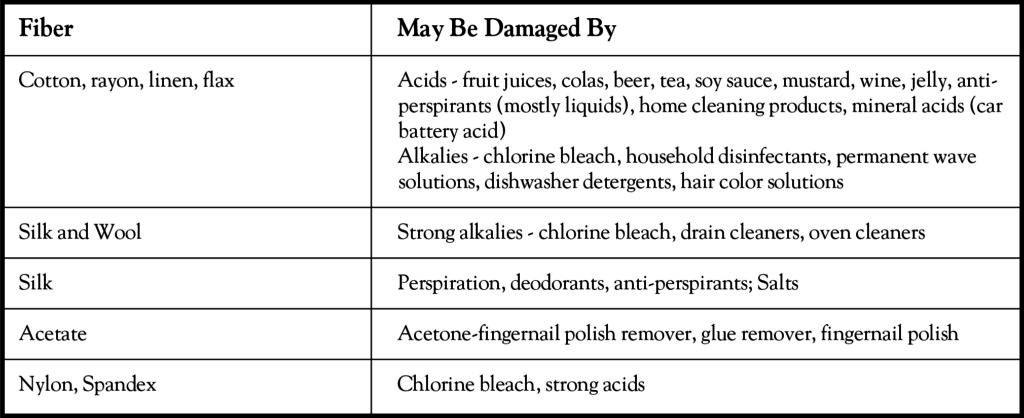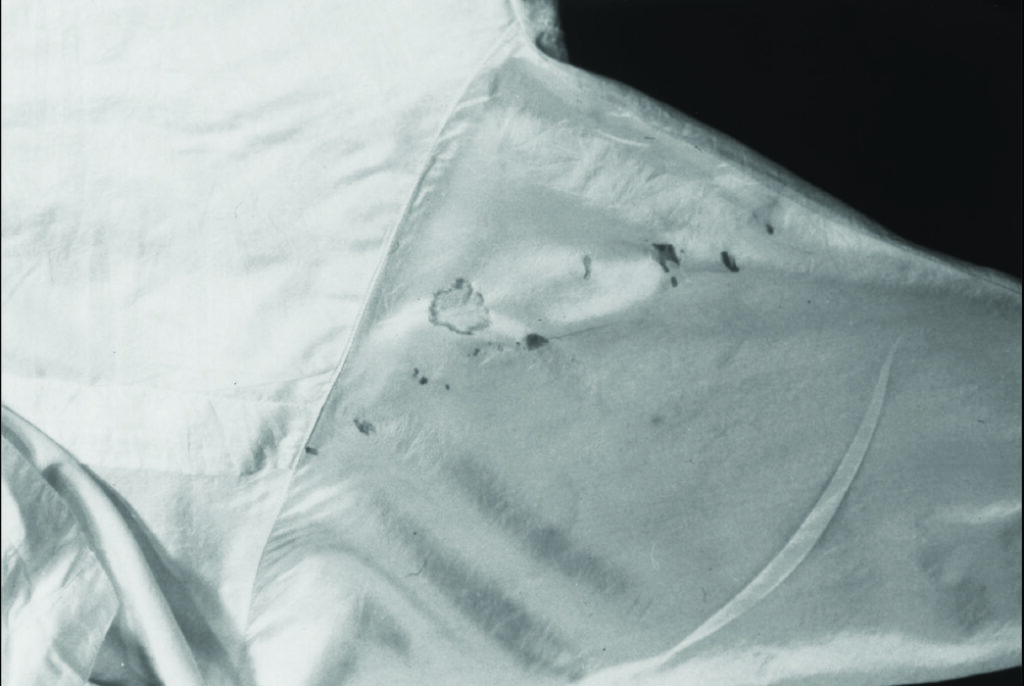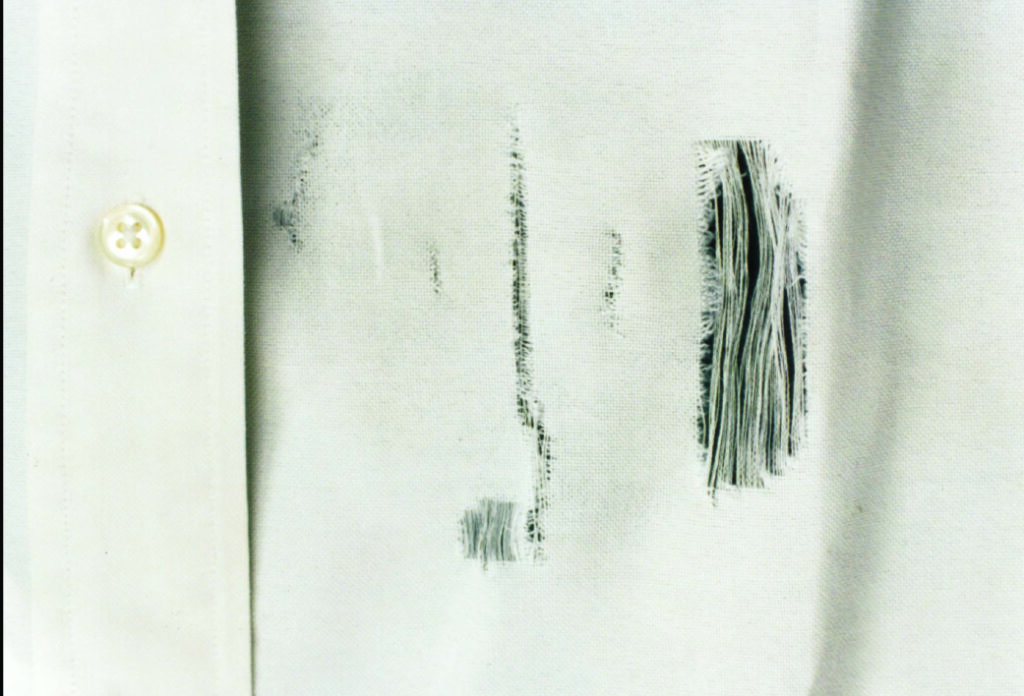Acids and alkalies can damage most cellulose fibers, including cotton, linen, and rayon. There are two main types of damage to cellulose fibers known as oxycellulose and hydrocellulose. Oxycellulose damage occurs when the fabric is degraded by a strong alkaline oxidizing substance, such as chlorine bleach, in the presence of air or heat. Hydrocellulose damage occurs when the cellulose fabric is damaged by an acid substance. What surprises many unsuspecting consumers is that the offending substance does not have to be a strong acid. For instance, common products like soft drinks and fruit juices can damage cellulose fibers if left on the fabric.
Other fibers can also be chemically damaged. The following chart lists the most common types of damage from stains. (See Figure #1)

PROBLEMS AND RESPONSIBILITIES
When the staining substance is strongly concentrated, holes may appear on contact with the fabric. In most cases, however, holes result after a period of time. Several factors affect the damage of fabric from staining, such as the weight and thickness of the fabric and the length of time the stain is left on the fabric. How long is too long? An earlier IFI study showed fabric damage can occur within one week of exposure to a stain. The damage increased significantly after one month. The types of stains that are most damaging with aging include fruit juices, beer, cola, milk, and other products containing sugar, which are damaging to natural fibers.
The most effective way to prevent this type of damage is to treat stained areas immediately. Blotting with a damp cloth can help to absorb some of the staining substance on contact. Stained garments should be taken to the cleaner as soon as possible for complete soil removal.
INSPECTION
Drycleaners should inspect soiled areas for signs of damage or tendering. In many cases, holes develop after the item has been subjected to agitation in cleaning.
STAIN REMOVAL
Stained areas should be treated locally prior to cleaning. If possible, use litmus paper to determine if the stain is acid or alkaline in pH. The cleaner may be able to neutralize the pH and prevent further damage to the garment.
CLEANING
Drycleaning and wetcleaning alone do not cause chemical damage. However, the weak fibers from staining may not be able to withstand the mechanical action of cleaning, and will fall out with the agitation of the care process. The chemicals used in commercial or institutional laundering may accelerate damage from previous stains, causing the damage to become more apparent after commercial washing. Whenever possible, remove stains before cleaning.

salts are present in many types of foods, beverages, medicines, perspiration, deodorants, plain table salt, and salt water. In this
instance, perspiration and/or deodorant has weakened the silk yarns.

as chlorine) that have not been rinsed out/or neutralized. Some substances that contain oxidizing agents or bleaches include home bleaches, metal and tile cleaners and other scouring products, disinfectants, permanent wave and other hair care products, acne and skin preparations, and other medicines. The damaged fiber is called oxycellulose, a very weak form of cellulose. The weakened fiber easily breaks in the normal agitation of later drycleaning and/or laundering processes, causing holes.
FINISHING
Heat will accelerate the action of most chemicals. Therefore, stains that are not visible before pressing or drying usually are more apparent after finishing. In the same manner, the damage from the staining substance is usually greater after the item is subjected to heat and tension in the finishing operation.
Since each staining substance we can potentially come in contact with has a different composition, the effect on different fibers will vary. In general, however, it is a good practice to treat stains immediately on contact. Many stains will cause chemical damage if left on the fabric for as little as two days. The longer the stain is allowed to age, such as for a week or month, the greater the degree of fabric damage.
This article is from DLI’s FF477(1998).

